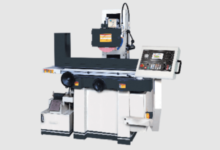Troubleshooting Blank Page Printing in HP Printers

Diagnosing the Blank Page Issue
So, you’ve hit the print button, expecting a masterpiece, and out pops… nothing. Just a blank sheet. It’s a common frustration, and if you’re asking yourself ‘why is my printer printing blank pages?’, you’re not alone. Let’s break down how to figure out what’s going on.
Understanding Common Causes
There are a few main culprits when your HP printer decides to go on strike and print blank pages. It could be something as simple as an empty ink cartridge, or it might be a bit more involved with the software. We’ll cover the most frequent reasons.
Initial Checks for Printer Cartridges
Before we get too deep, let’s do some quick checks on the ink or toner cartridges. These are often the first place to look.
- Check the protective tape: Did you just install a new cartridge? Make sure you removed all the plastic tape or seals. Sometimes, a little bit left behind can block the ink flow.
- Cartridge seating: Is the cartridge pushed in all the way? It needs to click into place properly.
- Correct cartridge type: Are you using the right cartridge for your specific HP printer model? Using the wrong one can cause all sorts of issues.
Verifying Print Queue Status
Sometimes, the problem isn’t with the printer itself, but with the computer’s instructions. Let’s check the print queue.
- Go to your computer’s ‘Printers & Scanners’ settings.
- Find your HP printer and open the print queue.
- Look for any documents that might be stuck or showing errors. You can try canceling them and sending a new print job.
It’s easy to overlook the simple things when troubleshooting. Before diving into complex fixes, always double-check the most obvious potential problems. A quick look at the cartridges and the print queue can save a lot of time.
Addressing Printer Cartridge Problems
When your HP printer starts spitting out blank pages, the printer cartridge is often the first place to look. It’s not always obvious, but a few simple checks can save you a lot of hassle and potential printer repair costs.
Ensuring Correct Cartridge Installation
Sometimes, the simplest fix is just making sure the cartridge is seated properly. It sounds basic, but a cartridge that isn’t clicked in all the way won’t make the right connection. Take the cartridge out, give it a gentle shake (if it’s an ink cartridge), and then reinsert it firmly until you hear or feel it lock into place. Make sure you’ve removed any protective tape or clips that might be blocking the ink or toner flow. It’s easy to miss one of those little plastic tabs.
Checking Ink or Toner Levels
This one’s pretty straightforward. If your ink or toner levels are critically low, the printer might not be able to print anything, even if it seems like there’s still some left. Most HP printers have software that can tell you the approximate ink or toner levels. You can usually find this in the printer’s utility software on your computer or sometimes directly on the printer’s display screen. If a cartridge is empty, you’ll need to replace it. Don’t wait too long, as running a printer with an empty cartridge can sometimes damage the print head.
Cleaning Printer Cartridge Contacts
Dust or debris can build up on the electrical contacts of the printer cartridge and the printer itself. This can interrupt the signal needed for printing. To clean them, carefully remove the cartridge. Use a lint-free cloth, slightly dampened with distilled water or isopropyl alcohol, to gently wipe the gold or copper-colored contacts on the cartridge. Also, clean the corresponding contacts inside the printer carriage. Make sure the printer is turned off and unplugged before you do this. Let everything dry completely before reinserting the cartridge and trying to print again. This step is often overlooked but can be a real game-changer for blank page issues. If you’re consistently having issues, you might want to look into reliable printer cartridge suppliers for replacements.
Software and Driver Solutions
Sometimes, the issue with your HP printer not printing anything isn’t about the ink or paper, but rather the software talking to the printer. It’s like trying to have a conversation when you don’t speak the same language. Let’s get that sorted.
Updating Printer Drivers
Think of printer drivers as the translator between your computer and your HP printer. If this translator is old or has mistakes, it can cause all sorts of problems, including blank pages.
- Go to the HP Support website. You can usually find this by searching for “HP Support” or “HP Drivers”.
- Enter your printer model number. This is super important to get the right drivers.
- Look for the “Software and Drivers” section.
- Download the latest driver for your operating system. Make sure it matches whether you’re using Windows or macOS, and the specific version.
- Run the downloaded file. Follow the on-screen instructions to install the new driver. You might need to restart your computer afterward.
Reinstalling Printer Software
If updating doesn’t do the trick, sometimes the whole software package gets a bit messed up. Reinstalling can give it a fresh start.
- First, uninstall the current HP printer software from your computer. You can usually do this through your computer’s control panel or system settings.
- Then, download the latest full software package from the HP website, just like you would for drivers.
- Run the installer and follow the prompts. It’s often a good idea to disconnect your printer from the computer during this process and reconnect it when the software tells you to.
Running the HP Print and Scan Doctor
HP actually has a handy tool for this exact kind of problem. It’s called the HP Print and Scan Doctor, and it’s designed to automatically find and fix many common printing issues.
This tool is pretty straightforward. You download it, run it, and it checks your printer setup. If it finds anything wrong, it usually offers to fix it right there. It’s definitely worth a shot before you try anything more complicated.
Just search for “HP Print and Scan Doctor” on the HP support site to download it. It’s a free utility that can save you a lot of headaches.
Hardware Checks Beyond Cartridges
Sometimes, the problem isn’t with the ink or the software; it’s something else inside the printer. Let’s look at a few hardware things you can check.
Inspecting the Print Head
The print head is where the ink actually gets onto the paper. If it’s clogged or damaged, you’ll get blank pages. Most HP printers have a way to clean the print head through the printer’s control panel or the software on your computer. You might have to run this cleaning cycle a few times. If you have a printer with separate ink cartridges and a print head that’s part of the cartridge, then replacing the cartridge usually takes care of this. But if the print head is a separate component, and cleaning doesn’t help, it might be broken.
Testing Different Paper Types
It sounds weird, but sometimes the paper itself can cause issues. If the paper is too thick, too thin, or has a weird coating, the printer might not be able to grab it properly or feed it through to the print head. Try using a standard, plain white paper, like the kind you’d use for everyday printing. Make sure it’s loaded correctly in the tray, not too full or too empty. If a different paper type works, you’ve found your culprit.
Checking for Paper Jams
Even if you don’t see a paper jam error, a small piece of paper or debris stuck somewhere inside can stop the printing process. You’ll need to open up all the access doors on your printer and carefully look inside. Use a flashlight if you need to. Gently remove any paper scraps or foreign objects you find. Make sure the printer is turned off and unplugged before you start poking around inside. Sometimes, a jam isn’t obvious, but it’s still blocking the paper path.
It’s easy to overlook the simple stuff when you’re frustrated with a printer. Before you start messing with complex settings, take a good look at the physical parts of the printer and the paper you’re using. Often, the fix is much simpler than you think.
Advanced Troubleshooting Steps
Sometimes, even after trying the usual fixes, your HP printer still decides to play coy and print blank pages. Don’t throw it out the window just yet! We’ve got a couple more things you can try.
Resetting the Printer to Factory Defaults
This is like giving your printer a fresh start. It wipes out any custom settings or glitches that might be causing the problem. The exact steps can vary a bit depending on your printer model, so it’s a good idea to check your printer’s manual or HP’s support site for the specific instructions. Generally, you’ll find an option in the printer’s control panel menu, often under ‘Setup’ or ‘Maintenance,’ that lets you restore factory defaults. Be aware that this will erase any network settings or custom configurations you’ve made, so you’ll need to set those up again afterward.
Testing with a Different Application
It’s possible the issue isn’t with the printer itself, but with the software you’re printing from. Try printing a simple document from a different program. For example, if you’re usually printing from Microsoft Word, try printing a plain text file from Notepad, or a simple webpage from your browser. If the document prints correctly from another application, then the problem likely lies with the original software or its settings. You might need to repair or reinstall that specific application.
Considering Replacement Printer Cartridge Suppliers
While less common, a faulty or incompatible ink or toner cartridge can sometimes cause printing issues, even if it’s new. If you’ve recently replaced a cartridge, or if you’re using a third-party brand, it might be worth trying a genuine HP cartridge or one from a highly reputable supplier. Sometimes, the internal components of a cartridge just aren’t up to snuff, leading to no ink or toner actually reaching the paper. It’s a bit of a gamble, but if all else fails, it’s another avenue to explore.
When to Seek Professional Assistance
So, you’ve tried everything, and your HP printer is still spitting out blank pages. It happens, and honestly, it can be super frustrating when you just need to print something important. If you’ve gone through the cartridge checks, driver updates, and even the print head inspection, and nothing’s changed, it might be time to call in the pros or look for some new supplies.
Identifying Persistent Issues
Sometimes, a problem just won’t go away, no matter what you do. If you’ve followed all the steps in the previous sections and you’re still getting blank pages, it’s a strong sign that the issue might be a bit more complex than a simple fix. Maybe there’s a deeper hardware problem with the printer itself, or perhaps a persistent software glitch that the usual tools can’t sort out. It’s like trying to fix a leaky faucet by just tightening it; sometimes, you need to replace the whole valve.
Contacting HP Support
When you’ve hit a wall, reaching out to HP directly is a good next step. They have support teams who deal with these kinds of problems all the time. You can usually find their contact information on the HP website. Be ready to tell them what you’ve already tried – it saves everyone time. They might have specific diagnostic tools or be able to guide you through more advanced troubleshooting that isn’t covered in the basic guides. Sometimes, they can even tell you if your printer is still under warranty.
Finding Reliable Printer Cartridge Suppliers
If you suspect your blank pages are due to faulty or empty cartridges, and you’ve tried multiple ones without success, it might be worth looking at where you’re getting your ink or toner. Not all cartridges are created equal, and sometimes, off-brand or refilled cartridges can cause printing issues. Sticking with genuine HP cartridges or reputable third-party suppliers can make a difference. If you’ve bought a batch of cartridges that all seem to be failing, it could point to a supplier problem. Checking reviews and sticking to well-known retailers can help avoid this headache in the future.
Wrapping Up: Getting Your HP Printer Back on Track
So, if your HP printer is acting up and just spitting out blank pages, don’t panic. We’ve gone over a few common fixes, from checking ink levels and print heads to making sure your software is up to date. Sometimes it’s a simple paper jam issue, other times it might be a driver problem. Give these steps a try. If you’re still stuck with a blank page after trying everything, it might be time to reach out to HP support or consider if it’s time for a new printer. But usually, one of these tricks does the job.
Frequently Asked Questions
Why is my HP printer printing blank pages?
A blank page often means the printer isn’t getting ink or toner to the paper. This could be because the ink or toner cartridges are empty, not installed right, or the nozzles are clogged. Sometimes, it’s a problem with the computer’s settings or the printer’s software.
What are the first things I should try if I get a blank page?
First, check if your ink or toner cartridges have enough ink or toner. Make sure they are snapped in correctly. Also, try running the HP Print and Scan Doctor, a free tool from HP that can fix many common printer problems automatically.
Can I fix a blank page by cleaning the printer parts?
Yes, you can often fix this by cleaning the print heads or the contacts on the ink cartridges. Sometimes, just removing and reinserting the cartridges can help. If they are very old, you might need new ones.
Should I update my printer drivers?
It’s a good idea to update your printer’s drivers regularly. Drivers are like instructions that help your computer talk to the printer. Outdated drivers can cause printing issues, including blank pages.
When should I consider buying new ink or toner cartridges?
If you’ve tried everything else and still get blank pages, it might be time to get new ink or toner cartridges. Even if the printer says there’s ink, the cartridge might be faulty or dried out. Also, consider trying a different brand of ink or toner, as some cheaper ones don’t work as well.
What should I do if none of these solutions work?
If your printer is still under warranty or you’ve tried all the common fixes without success, contacting HP support is a good next step. They can offer more specific help or tell you if your printer needs to be repaired or replaced.







